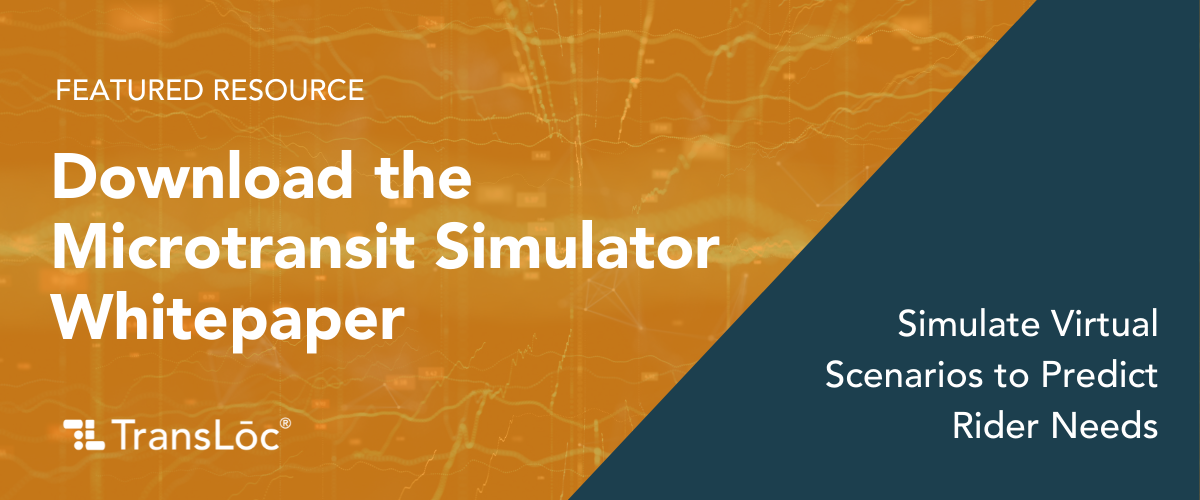
The past 50 years for transit innovation have been relatively stagnant. Community development in the United States since World War II is best defined with two words: urban sprawl. Streets, houses, and commercial buildings are constructed with car usage in mind, thus stretching out communities and further compounding transit’s problem of connecting people to where they need to go. To correct the challenge of long commutes and poor service quality that has potential riders preferring expensive car ownership over bus passes, community design and land use policies need to change in order to encourage fast, frequent, easy to access transit.
Transit’s persistent stagnation has led to decreased ridership and service inefficiencies—the two trends that keep transit officials tossing and turning at night. When the COVID-19 pandemic swept across our country, these concerning trends accelerated at a breakneck speed with a near 75% decrease in transit ridership. COVID-19 exposed the latent flaws in our transit system in a public and unforgettable way. The message public transit experts had been grappling with for decades was now clear to everyone:
What worked yesterday, does not work today.
How Does Transit Evolve? With a Forward-Thinking Mentality
Transit agency goals and metrics change town by town, city by city, and state by state. Policies and decisions that drive transportation services happen at the local level with government officials, residents, and other stakeholders interpreting data and voicing their opinions on which services will best meet community needs. The solution lies in establishing a harmonious ecosystem of fixed-route and on-demand that is best suited to your agency. One service isn’t superior to the other. They must complement each other in order to meet rider needs.
The Advantages of On-Demand Transit
On-demand services provide the flexibility that today’s transit rider craves. Supplementing some low-demand fixed-route lines with an on-demand service provides convenient and accessible transportation for riders while reducing agency expenses which, as we all know, is crucial as transit agencies are asked to do more with less. On-demand can be utilized to provide more direct connections to and from places of employment or recreation, or act as a first-mile/last-mile tie-in to the fixed-route transit network.
The Advantages of Fixed-Route Transit
There is something to be said about the comfort of a set schedule. We cannot dismiss the reliability and dependability of a functional fixed-route service. When a fixed-route service has access to dedicated corridors for its origin and destination, the speed and frequency in which it can serve massive volumes of riders is unmatched.
The Partnership of On-Demand and Fixed-Route
The flexibility and convenience of on-demand sits in one corner. The structure and unmatched service volume of fixed-route sits in the other.
If transit agencies and riders are going to come out winners in this transit evolution, it’s time for these services to meet in the middle.
Combining fixed-route and on-demand services allows a community or university to provide sub-30 minute headways in key corridors without sacrificing accessibility in lower demand areas that are best served through on-demand. Developing strong points of integration, think super bus stops or large transit centers, allows riders to move seamlessly between services while improving their access to community goods.
For transit agency experts, the data collected from either fixed-route or on-demand services can be evaluated and analyzed to inform future planning and transition from one service to another. The data may show that a fixed-route line with high expenses per boarding that attracts low ridership could be better suited for an on-demand service. Alternatively, if an on-demand solution shows a consistent pattern of travel between a specific origin and destination points, more riders may benefit from a fixed-route solution.
Fixed-route and on-demand public transportation need to work together to drive the future of transit, but the collaboration doesn’t stop there. TransLoc’s Planning & Design Services connects transportation experts with certified transit planners who possess the tools and expertise to help transit agencies strategize on the fixed-route and on-demand unification. Our team listens to agency goals and community needs while analyzing key data that can reveal innovative solutions to complex problems. Talk with our team of experts today and let’s start working together on the evolution of your transit services.
